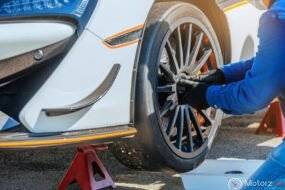Muffler Noise Troubleshoot noisy mufflers. often overlooked in the symphony of a vehicle’s operation, play a crucial role in maintaining a smooth and noise-free ride. When that peace is disrupted by muffler noise, it’s time to roll up your sleeves and troubleshoot the issue. In this article, we will explore the common reasons behind muffler noise and guide you through the troubleshooting process.
Understanding the Basics of Muffler Functionality
Muffler Noise Before delving into troubleshooting, let’s grasp the basics. A muffler is not just a mere noise suppressor; it’s a complex component designed to reduce exhaust system noise while enhancing engine performance. The exhaust gases pass through a series of chambers and baffles, each playing a unique role in mitigating sound.
Identifying Different Types of Muffler Noise
Muffler Noise noises aren’t a one-size-fits-all problem. Understanding the type of noise your muffler is making is crucial for effective troubleshooting. Common noises include rattling, hissing, booming, or a combination of these. Each noise points to specific issues within the muffler or exhaust system. Ignoring or mishandling complex muffler issues could potentially exacerbate the damage and lead to more significant, costly repairs in the long run.
Common Causes of Muffler Noise
One of the leading culprits behind muffler noise is rust and corrosion. Over time, exposure to the elements can cause your muffler to deteriorate, leading to holes or cracks. Mufflers are supported by hangers that can wear out or break, causing the muffler to hang unevenly and potentially make contact with other components, resulting in noise. Inside the muffler, there are baffles designed to reflect sound waves and reduce noise. If these baffles become loose or damaged, they can create internal noise. Any gap or hole in the exhaust system can lead to unwanted noise. Identifying and sealing these leaks is essential for muffler health.
DIY Troubleshooting Steps
Start by visually inspecting your muffler and exhaust system. Look for rust, holes, or any obvious damage. Pay attention to the hangers and ensure they are intact. Run your vehicle and listen carefully for the location and type of noise. This can help narrow down the potential issues. Ensure that all hangers and mounts are secure. Replace any damaged hangers to eliminate unnecessary movement. For small holes, consider using a muffler repair kit. In severe cases, replacement might be necessary. Carefully inspect the entire exhaust system for leaks. Look for soot or black marks around joints, as they indicate potential leaks.
When to Seek Professional Help
While DIY troubleshooting can resolve many muffler issues, some problems require professional attention. If you’re unable to identify the source of the noise or if the damage is extensive, it’s advisable to consult a qualified mechanic. If you find yourself unable to pinpoint the origin of the noise or if the damage appears to be extensive, it is strongly recommended to seek the expertise of a qualified mechanic. Professional intervention becomes imperative in cases where the intricacies of the muffler system demand specialized knowledge and tools that may be beyond the average DIY enthusiast’s capabilities.
Conclusion:
Maintaining a quiet and efficient Muffler Noise is essential for a peaceful driving experience. By understanding the basics of muffler functionality and following systematic troubleshooting steps, you can identify and resolve common muffler noise issues. Remember, a well-maintained muffler not only keeps the noise down but also contributes to the overall health and performance of your vehicle.





